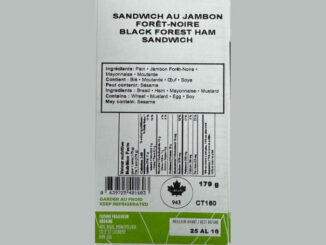
Jim Prevor
This column originally ran in the 2018 August-September issue of DELI BUSINESS.
For many years now, the growing importance of fresh departments has been widely recognized. With supercenters and warehouse clubs underpricing conventional supermarkets on center-of-the-store items, it became obvious that conventional retailers had to secure their future through the differentiation and profitability of the fresh departments. This has become only clearer with the growth of discount retailers, such as Aldi, Lidl and dollar stores, plus the many online delivery services that ship dry grocery items.
Now, however, the prospect of Omni-Channel Retailing offers to make the retail/foodservice aspect of supermarkets the pivotal key around which the future will revolve.
Too often, people think of the future as digital — and there is certainly no question that this component will grow. But it is also becoming increasingly clear that, to turn a biblical phrase modern, man shall not live by digital alone.
This means there will be physical spaces in which people will engage. And no department offers a more physically rooted space for engagement than the foodservice spaces in a store.
The focus today is on the Omni-Channel future. This is different than just having an online ordering portal and delivery service. Partly, Omni-Channel is about customer service. It is a way of saying we want to serve our customers in the many ways they wish to be served. That may be a small convenience store or a large supercenter or via delivery or click-and-collect, an almost infinite assortment of paths to service.
Looked at it from a business perspective, Omni-Channel is a way to maximize sales and profits by leveraging all available touch points. So, for example, Carrefour in France has established that allowing customers to return online purchases in stores increases total sales. Why? Well, you don’t have to be a retail genius to see the path: 1) People are more likely to buy from a retailer online if they know they can return things conveniently to a local store. 2) Returns to the store often represent an additional purchase occasion and while they are there, consumers pick up additional items.
But maintaining the viability of the store — the physical space — is essential. It does not seem likely that viability will be sustained with dry groceries. In fact, shopping itself may transform into a continuing replenishment model where your favorite shampoo gets delivered every three weeks and your favorite fabric softener once a month. Indeed, one would expect Kayak-like digital services to get these branded products for you in the cheapest possible way.
Brands will be in deep trouble, as well. Ordering will increasingly be done through voice. A consumer might say, “I need a pound of sliced turkey breast,” and if that consumer normally buys Boar’s Head turkey from the neighborhood store where there is a visual cue, we don’t really know if that will happen without the visual cue.
We also don’t know how flexible consumers will be. If they do order Boar’s Head and Alexa says, “We don’t have that, but we have Dietz & Watson, which also is of high quality and recommended.” Will consumers say “Ok, do that?” What if the system biases toward private label brands. Will that work for consumers?
Foodservice, however, seems certain to play a big role. People like to eat, and they enjoy socializing. Indeed “eating out” is a unique product characteristic. Sure, people can get lunch delivered to their desks or buy from a vending machine — and these are all aspects of Omni-Channel, as well — but just as the market for flowers for funerals or Valentine’s Day is a “necessity” market — whereas picking up a bouquet for your dining room or significant other is more of an impulse buy — the decision to dine out translates into something more than nutrition. It may be an opportunity to clear one’s head when getting a coffee or to meeting a friend for lunch away from the kids. It is why people still go to movie theaters even though they can watch Netflix.
The thing we need to assess is how best to use the foodservice capability in an Omni-Channel world. Sampling seems an obvious win. People may order the rotisserie chicken online because they know and like it. If there is a new item, using the store foodservice option to introduce it seems a win-win for both retailer and manufacturer.
Of course, just having people in the store creates loads of opportunities to showcase new items — in and out of the deli department. With small screens on mobile devices and no visual cues at all on voice ordering, perhaps supermarkets will be more like showrooms for manufacturers to showcase their products in displays built around vibrant foodservice operations.
So, Omni-Channel consumers can be drawn to supermarkets by four enticements:
- the foodservice operations,
- services such as online return,
- some areas where consumers like to see, touch and smell before purchasing — say squeezing a melon in produce,
- and items difficult to deliver online — hot donuts, for example.
Then the manufacturers of the world will pay to expose consumers to their products just as magazines pay retailers for prominent display. Consumers could scan items with their phones to order whatever they see in-store, but the store would have limited inventory.
It is a brave new world, but it is built around primal human instincts — to eat, to share, to love.



